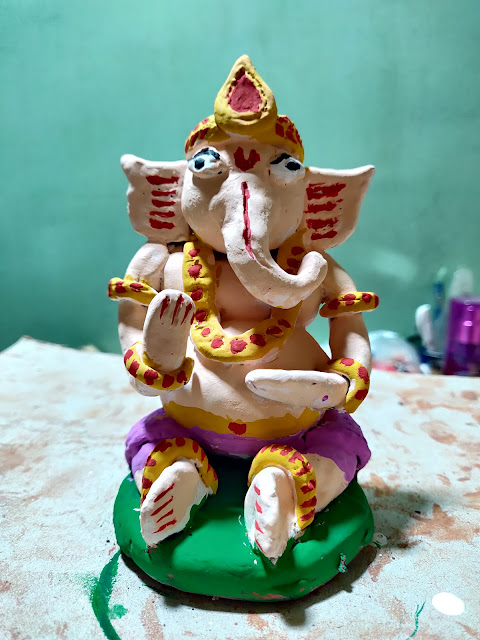I have been attending the Sustainability Zoom Sessions arranged by Asian Paints Team. In April 2021, we had the "How to be a Green Traveller" session. The emphasis was on how to be a responsible traveller, reduce our carbon footprint, not to litter, not to create plastic waste, etc. We have a contest after each Sustainability Session. We need to complete a task and upload pictures of the same on the WhatsApp group "Sustainability Champions". I had not taken part in the contests so far. This was my first time. We had to mention the place where we would be planning our next trip and five things which we will do as a green traveller. I had submitted my entry for the same on the group. In August 2021, we had a Green Festival Celebration session, just a few days prior to Rakshabandhan. We were demonstrated on how to create an ecofriendly raakhi and an ecofriendly Ganpati idol. And a surprise was revealed at the end of the session. All those who participated in the contest of the Q1 (Apr to Jun) sessions, would be receiving a green gift from the Sustainability team. And the green gift was this: Grow Your Own Ganesha
The kit included soil and clay to create the idol; seeds to plant the tulsi after doing the visarjan in the pot. I am not good at clay modelling and making a ganpati out of clay and soil seemed to be next to impossible. But since Ganpati Bappa chose to come to my home, I had to do this. I watched a lot of videos on making the idol. Finally started with the activity, got the dough prepared from my mother. I created the parts one by one, starting with the base, two legs, stomach, upper part, two hands, head, ears, crown, trunk, clothes and ornaments. Then started the assembly part, sticking the legs on base, then stomach, sticking the upper part on the stomach. Most difficult part was attaching the hands on the upper part. After some time, the hands were falling apart. Then I applied a trick and used the same for attaching the truck on the head and head finally on the upper part. Then the ears were attached and the crown and ornaments were added. The ornament design was created using small pointed stuff from my dissection box. The idol looks like this.
After keeping the idol to dry for a day, I applied colour to it and again kept it to dry for another night. Finally the idol was ready for the puja on Ganesh Chaturthi.
We placed it on the platform and decorated the surroundings with flowers and fruits. Naivedya (of 21 modaks) was prepared and served to the lord, with the aarti.
I had the task of keeping check on the akhanda diva (means the niranjan or diya must be continuously lit throughout the day and night). Again, we had the aarti in the evening and the next day morning. The next evening was the visarjan time. After doing the pre visarjan aarti and rituals, I picked up the idol and immersed it thrice in the pot of water and then we waited till the whole idol dissolved in the water. Then the tulsi seeds were planted.














